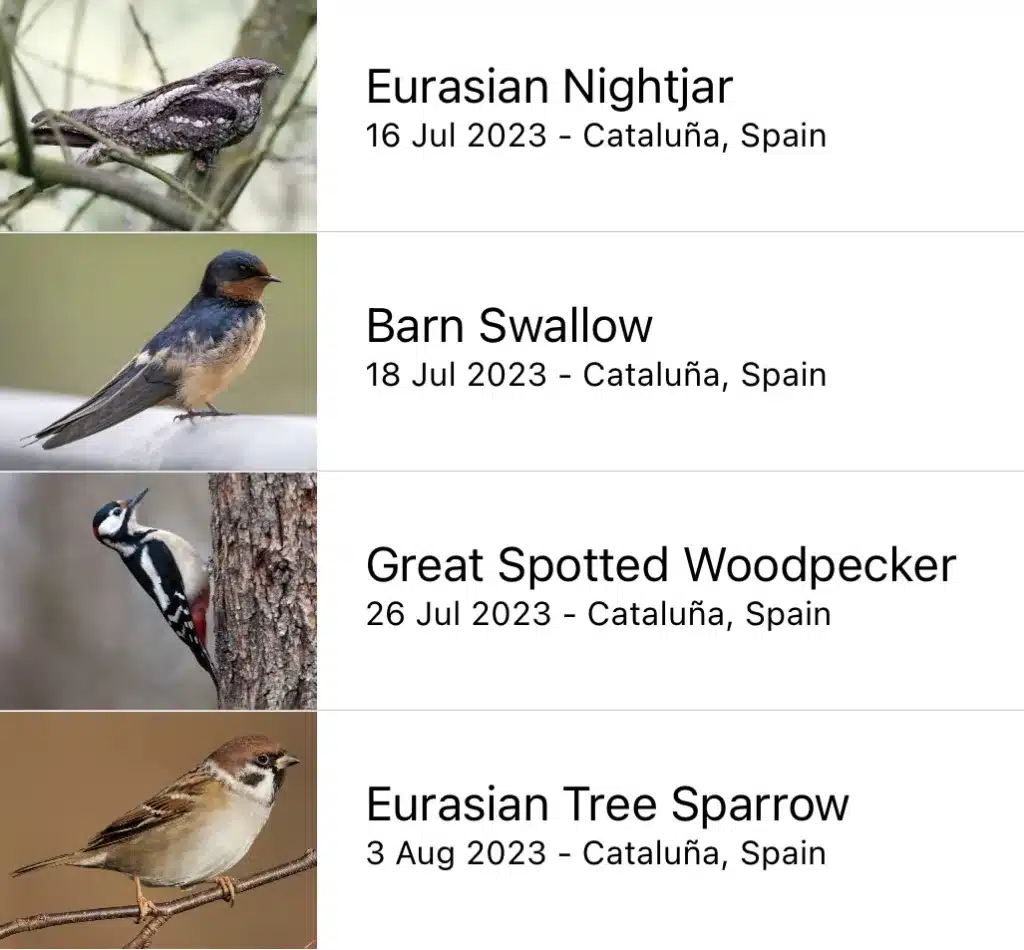If someone had told me ten years ago (when we were living in a two-room apartment in Paris) that I’d soon be living in the countryside, looking at the readings from my weather station and listening to birds, I would not have believed them.
But that’s what happened, and I love it.
Having half a hectare of garden in the middle of a huge park means that we get quite a few birds, and I used to use an app called ChirpOMatic to identify them, but it often failed, or wasn’t sure. Then recently, a friend told me about the free app Merlin BirdID, and it has been a real eye-opener.
The app is really really good at identifying bird song, and in six weeks we have discovered that over thirty different birds have visited our garden. That’s probably more than in the park, as our place has a mix of bushes, trees and open space you don’t find naturally, plus different flowers and other plants that would not survive without watering.
The early morning is the best time to record, and some birds have an incredibly intricate, ever-changing song. Let’s take a look at what we’ve heard so far.
We knew the swifts already – they return every year to nest under a broken at the edge of the porch. They have the craziest screech and fly at truly frightening speed.
What surprised us though is that there is not just one species of swift here – the app also identified an alpine swift (we’re 300 metres above sea level, so perhaps not a surprise) and a pallid swift, so the area seems to agree with them. Wish they ate more mosquitos though 😕
I thought blackbirds were pretty ordinary, and they’re a real pain in the vegetable patch, scratching up all the hay and stealing stuff, but their song is amazing. Same goes for the chaffinch, robin and wren – their song is astounding, and we hear it almost every morning (they are very loud).
Pigeons are very easy to identify, but it was only a couple of years ago that we learned to recognise the song of the golden oriole. It’s almost tropical, and quite unusual.
Blackcaps sing pretty loudly and distinctly too, but I wasn’t familiar with the serin, nuthatch or firecrest, so it was interesting to see them identified.
We also get lots of different tits – I thought they were just blue tits, but they’re not – we also have coal tits, crested tits, long-tailed tits, and great tits, all with different songs. Fascinating.
The further down the list we go, the rarer the birds become (although not the jay – I added this one as we see it a lot, but it doesn’t really sing). As the weeks went by, I was surprised to see new birds added almost daily, especially birds I didn’t really know, with particularly odd names like the short-toed treecreeper, as well as a crazy number of warblers – the western Bonelli’s warbler, melodious warbler, garden warbler, Sardinian warbler… 🤩
It was also great to see a picture of a goldfinch, a bird we’d seen around but hadn’t identified, and to know what woodpecker was making the distinctive tapping noise we hear quite a lot.
The thrush and nightingale are both known for their beautiful song, but I had to add the wagtail myself as they don’t actually make a sound, although we do love their comical hopping around on the ground.
And although we are now at the end of the list, some of the birds seen here are regular visitors, like the magpie and cute little cirl bunting (love that name, and it’s even wilder in French – bruant zizi) which was first sighted in 1766 (thanks Wikipedia).
We haven’t heard the black restart very much though, and surprisingly the house sparrow is hardly ever here. Perhaps they are somewhere with more, er, houses.
So those are the 33 birds we’ve identified so far! I expect that as the seasons change, we’ll hear a few more, but it’s been great identifying them and seeing their photos – some are not easy to spot in the trees.
Perhaps you’ll be tempted to download the MerlinID app and try it our yourself during your stay!
I’ll leave you with a photo of the golden oriole, perhaps our favourite for its song and colour. It’s also a bird that arrives in spring – when you hear the oriole you know warmer weather is on the way 🙂
BONUS!
Since writing this article, four more new birds have passed through:
— the nightjar, which is only heard at dusk and is very well disguised,
— the barn swallow, a welcome addition to the numerous swifts we already have,
— the great spotted woodpecker, which is extremely noisy when it want to be, and
— the tree sparrow. Thought he’d never get here!









